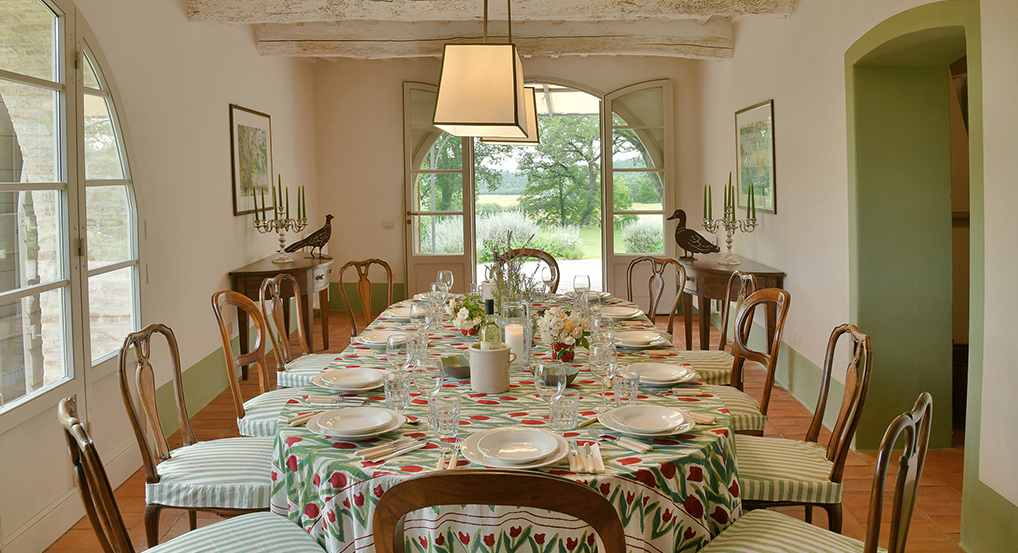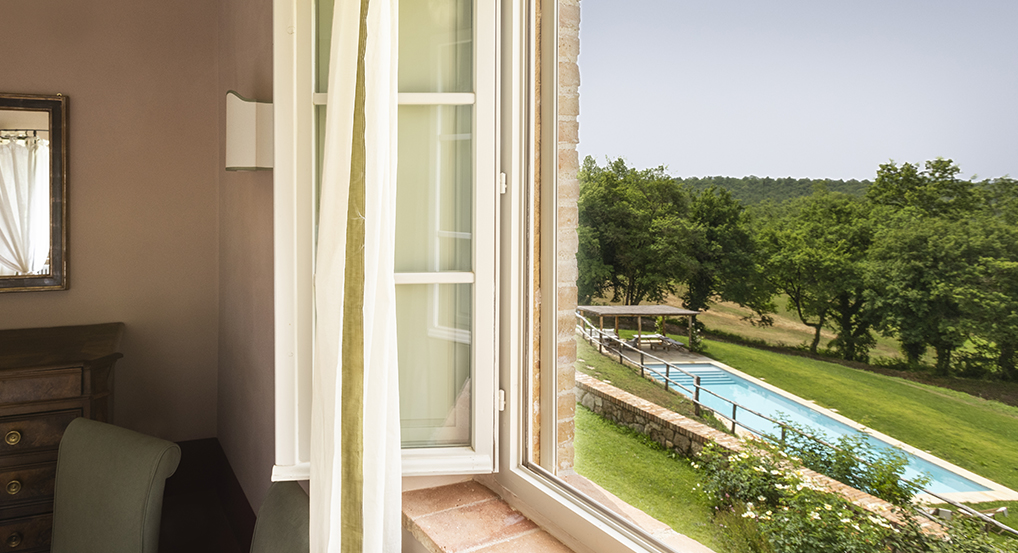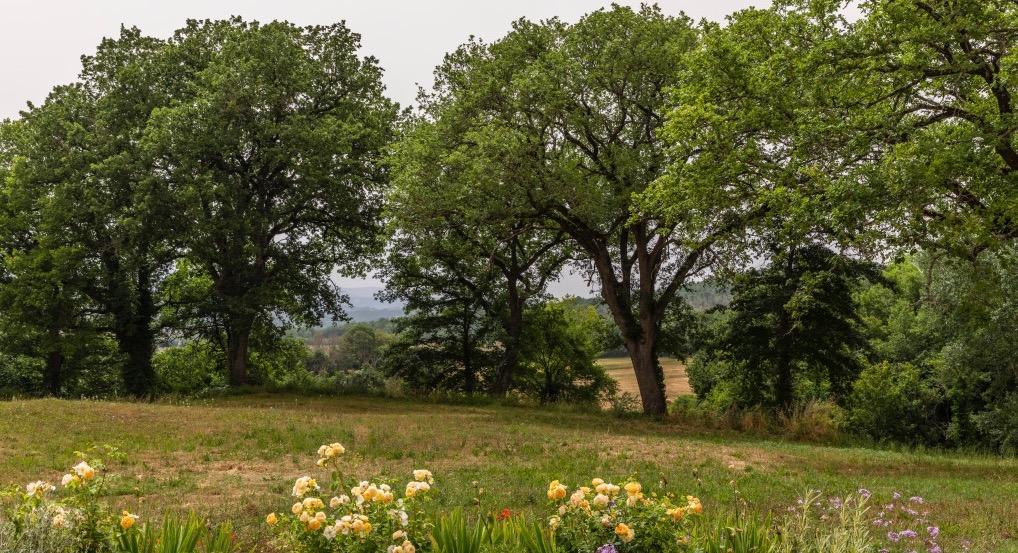– Riserva Naturale Alto Merse: The Upper Merse Natural Reserve is a 12 hectare natural reserve, perfect for hiking, cycling and horseback riding. Discover rolling hills, meadows, mountaineous areas, dense woods and natural hot springs. This reserve is also home to a number of animals, including wildcats, martens, skunks, snakes, eagles, and three species of woodpecker, among others.
– River Merse: Swimming is possible in this unpolluted river, in the hills above Brenna, with many beautiful swimming spots.
– Torri: Torri is a quaint Renaissance town with a little-known Romanesque cloister (open from 9-12 on Mondays and Fridays), which is the only example of a Romanesque cloister still standing in Tuscany. And it is stunning. The weekly town market is held every Thursday.
– Rosia: Rosia is a small village, built around an ancient church and a castle. Sienese noblewoman Pia de’ Tolomei, who is mentioned in Dante’s “Divine Comedy” once lived here. There is now a Farmer’s market held here on the first and third Friday of every month.
– Chiusdino: Best known for the Abbey of San Galgano and the Hermitage of Montesiepi, Chiusdino celebrates its medieval atmosphere. Inside the small, historic village where San Galgano was born, you’ll find the Church of San Martino, parts of the city wall, and the Church of the Compagnia di San Galgano, which house a fabulous bas-relief of San Galgano thrusting his sword into a rock. The Hermitage of Montesiepi and its basilica, one of the preeminent artistic symbols of Tuscany, are the most important religious monuments in the Sienese territory and one of the first and most impressive examples of Romanesque and Gothic-Cistercian architecture in Italy. Here, you can also find the legendary sword in the stone.
– Abbazia di San Galgano: Situated in the historic town of Chiusdino, the Abbey of San Galgano was founded as a Cistercian Monastery. Today, only the Gothic style walls and an apse rose window of this 13th-century Abbey remain.
– Hotel Borgo Santo Pietro: Located in the heart of Tuscany, this 5-star boutique hotel was once a healing stopover for medieval pilgrims. This restored 13th-century estate also houses a Michelin-starred restaurant, holistic spa and working farm.
– Radicondoli: Resting atop the metalliferous hills, Radicondoli is a medieval town known for its fabulous views, narrow, winding streets, authentic Tuscan restaurants, and its cozy feel. A small Energy Museum details the local renewable energy sources, with a focus on geothermal energy.
– Colle di Val d’Elsa: Best known for its crystal glass production, Colle di Val d’Elsa is a charming, medieval town with nice restaurants, breathtaking views, a Duomo, and many museums. In fact, 95% of Italian crystal glass production and 15% of production worldwide come from Colle di Val d’Elsa. After a visit to the Archaeological Museum and the Civic and Diocesan Museum, spend some time at the Crystal Glass Museum, which houses a collection of handmade crystal glass from medieval times through today and details different manufacturing techniques. On the first Sunday of the month, you can watch an open-air glass production demonstration, and visit the local market, which offers products like local cheeses, sausages, glassware, plants, pets, clothing, and more.
– San Gimignano: A stunning UNESCO world heritage site, San Gimignano is a small walled medieval hill town in the province of Siena, Tuscany, north-central Italy. While only 15 of the original 72 towers are left standing, you can climb those that remain for impressive views of the Tuscan landscape. The town also is known for the white wine, Vernaccia di San Gimignano, grown in the area, and delicous gelato in inventive flavors.
– Montalcino: Montalcino is a lovely, medieval village nestled in the Val d’Orcia Natural Parks, known for its production of Brunello red wine. In the historic center, you’ll find an impressive fortress with spectacular views from its ramparts. This fortress is also home to the famous Jazz & Wine Festival each July. In addition, Montalcino is rich with churches and museum, including the Glass Museum, which sits inside the Poggia alle Mura castle.
– Rosewood Castiglion del Bosco Hotel: Located with the UNESCO-listed Val d’Orcia Natural Park, Rosewood Castiglion del Bosco is a 5000-acre country estate boasting a Brunello di Montalcino winery, two restaurants, a spa, a pool, and a private golf club.
– Bagni di Petriolo: Famous for its natural hot springs since Ancient Roman times, Bagni di Petriolo is an oasis of calm surrounded by nature reserves and beautiful landscapes, set well away from tourist crowds. Soak in the 43°C thermal waters thanks to two wellness centres and direct access to thermal pools located along the River Farma. Indulge in spa treatments or simply enjoy the therapeutic benefits of the free thermal pools.
– The Chianti Region: Once a battlefield for fights between Siena and Flornence, Chianti is now one of the most beautiful regions in all of Italy, with verdant, rolling hills covered in luscious vineyards and olive groves; charming stone villages, winding roads, and flowing rivers. Villages are typically characterized by Romanesque churches and fortified medieval castles. Chianti is perhaps best known for its namesake red wine, which received its designation all the way back in 1932.
– Siena: The Sienese have no doubt, their town is the most beautiful in all of Tuscany, if not all of Italy. Siena has remained a Gothic city. Renaissance, one of the major influences in Florence, hardly affected the urban development of Siena. The city unfolds around the main shell-shaped square called “Il Campo.” Twice a year the famous horse race known as the “Palio” takes place here. The narrow streets are lined with old shops and small cafes, while churches and museums are real treasures of the fourteenth century.
– Florence: The city lies on the Arno River and is known for its history and its importance in the Middle Ages and in the Renaissance, especially for its art and architecture. A centre of medieval European trade and finance, the city is often considered the birthplace of the Italian Renaissance; in fact, it has been called the Athens of the Middle Ages. It was long under the de facto rule of the Medici family. From 1865 to 1870 the city was also the capital of the Kingdom of Italy. The historic centre of Florence continues to attract millions of tourists each year and was declared a World Heritage Site by UNESCO in 1982.












































